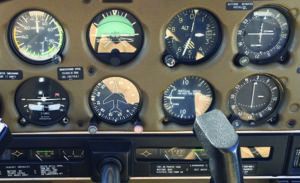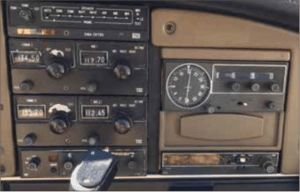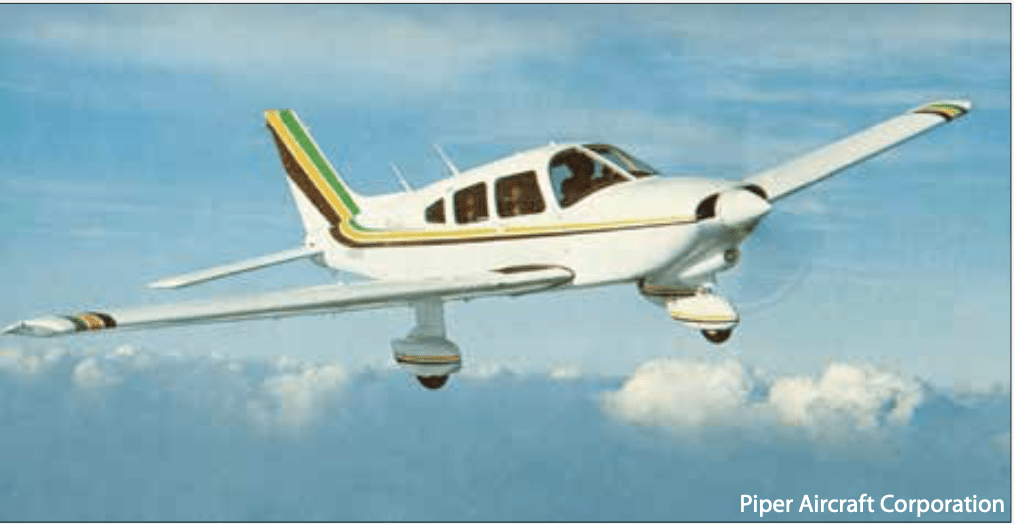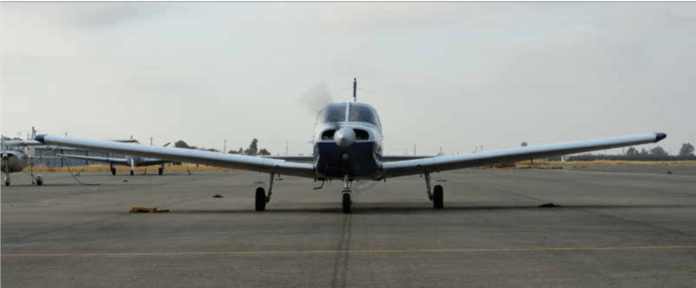After a while, even brand-new pilots start racking up logbook entries in a series of different aircraft. At first, we may not care, grateful for the flight time, and not pay much attention to how each aircraft has its own character. Each one also has its own story, reflected in your pilot’s logbook and those of others who have flown it, which may include both good and bad memories. And there are what I call “milestone” aircraft, those we were flying when reaching some rung on the ratings and certificates ladder: first solo, private certificate, instrument rating, etc.
If we keep flying, and do it in an array of different aircraft, we’ll likely lose track of this Skyhawk or that Arrow along the way, even though our logbooks have the pertinent details. One day, you’ll try to schedule your favorite flivver and it’ll be gone: sold and relocated, or severely damaged and not returning to the flight line any time soon. Maybe you move away, leaving it behind. Sitting around with pilot-friends one night 10 years later, you’ll ask yourself whatever became of the Cessna you soloed. I recently tracked down a few of the airplanes I’ve logged time in, which the FAA and most other registries make relatively simple: Do a search on the relevant web site. At the least, the results can be comforting. They also can be frustrating, sad and educational.
PRIMARY TRAINING
When it comes to starts and stops, I think my primary training was fairly typical. Just as I was knocking out the cross-countries and getting a handle on the checkride, the airplanes I had been flying—the Cessna 150J in which I soloed and a Piper Cherokee 140—went away. They belonged to the same organization, which eventually replaced them with a Cessna 172F, but not immediately. At about the same time, the instructors I had been working with went on to greener pastures, leaving me more or less grounded.
The 150 I had been flying was typical for the day, with a 90-channel Narco Mark 12 nav/comm and a full set of gyro instruments. Dating myself here, but there was no need for a transponder at my local airport. Instead of a pointy prop spinner, it wore a small, rounded “skull cap” covering part of the hub. Other than that, it was a bog-standard 150, even down to the MTBUWO (mean time between unwanted window openings) of 2.5 hours. Naturally, the passenger-side window popped opened as I took off after the second touch-and-go of my first solo flight.
The 140 was similarly equipped and I liked it well enough—it was faster and had rear seats. I only got a few hours in it before it “left,” which wasn’t even enough time for me to learn which way to turn the overhead pitch-trim handle, the one copied from a ’37 Buick’s window crank. A couple of months elapsed before a different Cessna 150 became available. The replacement was basically the same, and came with a “real” propeller spinner. A brand-new CFI soon got me through the checkride in it. I was her first private pilot.
Today, the Cessna 150 I soloed is in private hands in Colorado. The Cherokee 140 was apparently destroyed in an off-airport landing in 1993, in Kentucky, after an engine failure. The (230-hour!) solo student pilot, a 51-year-old male, suffered minor injuries. According to the NTSB, post-accident examination found no reason the engine failed, which sounds like carb ice to me. The 150 I got my private in was deregistered several years ago and exported to Brazil. Its serial number isn’t in Brazil’s aircraft registration database.

For decades, I’ve wondered what happened to the Piper Archer II in which I earned my instrument rating. It was a club airplane, and popular, since it was relatively fast and economical, plus easy to fly. It also had a vanity N-number that made it stand out on the ramp and on the frequency. While the tale of that club is its own article, the airplane went to other hands not long after I passed the instrument checkride in it. When it left the club, the registration was changed. I never flew it again after the day of my checkride and didn’t know its new N-number; the old one now is on a Gulfstream owned by a leasing company.

Fast forward to a couple of months ago. Determined to find that airplane, I poked around the FAA’s aircraft registry site late one night and came upon an email link for questions. Not expecting anything, I crafted a note explaining I’d lost track of an airplane with a specific N-number and added the timeframe in which I flew it. I truly never expected a response.
The next morning, I had an email with the serial number. I immediately plugged it into the registry’s search engine, which returned its new registration. Since it recently changed hands, images of it were on an airplane trading web site. I’m happy to report it has a fresh interior and paint, and apparently is in good hands, in California. Someone added a DME along the way, but It still had its KX-170B nav/comms, the paint on which I helped wear away, and its ADF. The moral of this story? Write down the serial numbers of the planes you fly if you ever want to track them down again.
POST-PRIVATE
I started flying that 172F shortly after earning the private certificate. My main memory of it was flying it on a for-real Civil Air Patrol mission. I ferried it to a nearby airport to pick up a mission-qualified pilot, and we flew it to a third airport to participate in the search for a missing airplane. The guy I picked up landed way long on a paved runway, rolling off the departure end, with both of us standing on the brakes. Thankfully, there was no damage.
That airplane was destroyed in 1983, fatally injuring its solo, non-instrument-rated private pilot (female, 50). According to the NTSB, the airplane entered a low ceiling shortly after a night takeoff from Brunswick, Ga. A witness observed the aircraft’s navigation lights move in a circling motion as it “plunged to the ground.”
After a couple of relocations and renting various airplanes for a few years, I joined a club with three Pipers, and which soon added a fourth. We had a Tomahawk, a 150-hp Warrior, the Archer II I earned my instrument rating in (see the sidebar above) and a Turbo Dakota. The first three are still on the FAA’s registry and appear active. The Turbo Dakota was destroyed in a fatal accident which killed the instrument-rated commercial pilot (male, 45) and his passenger (see the sidebar above).

The Piper Turbo Dakota I used to fly came apart one day over eastern North Carolina. Both aboard were killed. The commercial pilot had reported a vacuum system failure and a pitot/static system malfunction while IFR in instrument conditions. A weather observation near the accident site included zero visibility and a 300-foot overcast in fog and rain. Its “flight track and altitude were erratic,” according to the NTSB and, 28 minutes later, the pilot reported “he was in a dive.” Soon, “the right outboard wing panel, rudder and horizontal stabilator(s) separated in flight.”
Examination revealed the vacuum pump drive coupling sheared—a not-uncommon occurrence for the day—because sealant tape was used during its installation. According to the NTSB, “The airplane was equipped with a standby vacuum system, which at higher altitudes, required that the pilot spool the system (reduce power then advance the throttle) to maintain vacuum pressure.”
The NTSB determined the probable cause(s) to be: “The pilot’s improper use of equipment which affected the operation of the standby vacuum pump, the pilot’s loss of aircraft control after experiencing spatial disorientation, and his exceeding the design stress limits of the aircraft. Factors related to the accident were: the mechanic’s improper use of thread coating material, the pilot’s operation of the aircraft with a known malfunction of the primary vacuum pump, and the adverse weather conditions.”
CLUBBING IT
After a few years, I traded the Piper club for one with an even greater number of airplanes, including a Cessna 182, two Piper Arrow IIs and two Cessna 177 Cardinal RGs. I developed a fondness for all three types: If you could close the doors on the 182’s load, it would fly, and the Arrows were good cross-country airplanes and somewhat simpler—no cowl flaps—than the Cardinals. The Cardinal RGs were at least as fast as the Arrows, had longer legs and roomier cabins.
Today, the 182 is based in Texas and looks much the same as it did back in the day. It appears active and well cared-for. One of the Cardinal RGs also seems to be still going strong and is now in Arkansas. The other Cardinal RG is in a club in California. Neither seem to have made the NTSB’s database, though I remember one of them being landed gear-up. One of the Arrows sustained substantial damage in 1986 when its nose landing gear wouldn’t extend. It’s been repaired and now is based in Florida, also apparently active and cared-for.
The other Arrow wasn’t so lucky. In 2002, according to the NTSB, its pilot was cruising at 6500 feet msl over eastern Tennessee when he noticed clouds building at 5000 feet and decided to return to the departure airport. While descending through a narrow gap in the clouds, clear ice “began to form rapidly.” The private pilot (age 59, male) descended into a valley and the ice began melting. The pilot then initiated a climb to clear a ridgeline, but the airplane collided with trees and caught fire. The airplane came to rest 10 feet below a mountaintop; the solo pilot sustained minor injuries but the airplane was destroyed in the fire. The pilot did not obtain a weather briefing before takeoff.
A TALE OF TWO 205s
One of my earliest experiences with personal aviation came courtesy of my father, who had earned his commercial and flew the family to visit relatives one Christmas. The chosen steed for this journey was a nearly new Cessna 205, basically a fixed-gear 210. It led a rough, relatively short life.
A couple of years after that Christmas trip, it sustained substantial damage when its non-instrument-rated, 21-year-old private pilot with 16 hours in type miss-set the altimeter so it read 200 feet high. The airplane contacted trees as the pilot tried descending to get under a 500-foot overcast at night, but landed without further damage. It apparently was repaired and next appears in the NTSB database a few years later when a private pilot (age 35) with 250 hours in type suffered a partial engine failure. The pilot set up for an off-field landing but failed to clear a fence.
The Fates weren’t finished with this 205, however. Its demise came three years later in Mexico when it was destroyed after a reported stall/spin, killing the 39-year-old private pilot and two passengers.
Even if I had known any of that at the time, it wouldn’t have affected my years-later decision to buy into a newly formed club based around a fairly clean 205 at a local airport. I flew a couple of day trips in it before one of the partners took it to the Midwest, where he promptly lost a cylinder but landed safely, grounding the airplane. Soon, another club member airlined out to retrieve the repaired airplane, then got distracted and lost control during the ensuing night landing at the airplane’s home base. He was uninjured. The insurance company totaled the underinsured airplane, paid the club the hull value and repaired it, probably selling it for a nice profit. It’s now in Alaska.

A few years after the second flying club, a close friend and co-worker offered to let me fly the Cessna 172M she and her husband owned with a third partner. I was the high-time pilot of the four, and happily shelled out my share of the annual insurance bill. My hourly cost? Ten dollars an hour, buy my own gas. The airplane had a pair of ARC nav/comms—one with an ILS—marker beacons and an ADF, but little else. Still, it was reliable and flew straight enough that, once trimmed out, I could fly it hands-off with only an occasional bit of pressure on a rudder pedal to raise an errant wing. The airplane was a bargain at $10/hour, and I put a lot of hours on it.
I enjoyed it even more after a couple of years when the owners invested a pot of money. When the smoke cleared, it had been upgraded from 150 hp to 180, had auxiliary fuel tanks totaling 24 gallons installed in the wings, plus aileron gap seals and some other aerodynamic clean-up. The cherry on top was a gross-weight increase, from 2300 lbs. to 2550. If that wasn’t enough, the owners ditched one of the ARC radios and replaced it with a KX-155, a King audio panel and—drum roll, please—a Northstar M-1 Loran navigator. It met all my weight and space needs, cruised at a solid 125 KTAS and had six hours of fuel. The only downside? The hourly rate skyrocketed—to $15/hour.
I’m happy to report that Skyhawk is still out there, and has seen even more upgrades. It recently changed hands again and presently is based in California.
WHAT DID WE LEARN?
At least to me, there are several lessons from this look-back at airplanes I’ve flown. One involves how we deal with mechanical failures: the Turbo Dakota and the Cherokee 140 were destroyed after a vacuum-pump and an engine failed, respectively. Landing-gear problems also cropped up but were competently handled and didn’t result in loss of the airframes. It’s reasonable to presume mechanical faults befell more of these airplanes but didn’t result in a reportable events.
Another thing we learned is that an instrument rating has great value. Lack of it could be blamed for the 172F that spiraled in, plus the Piper Arrow that crashed just below a mountaintop and the first 205’s encounter with trees. I also see some appalling airmanship (the first 205’s stall/spin accident) and poor aeronautical decision-making (the 172F, the Piper Arrow and both 205s, plus the Turbo Dakota).
In other words, the same kinds of accidents that keep occurring for the same reasons, which is especially disappointing since this tale of remembered airplanes spans more than 40 years.
The good news is that we can combine training and practice, good maintenance and piloting skill, situational awareness and respect for what can and does happen when we fly so that even a basic Cherokee or Skyhawk can amass thousands of flight hours and come through it unscathed. The problems arise when there’s a loose nut behind the wheel.




